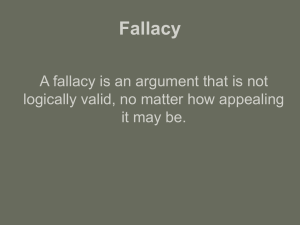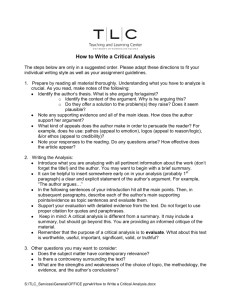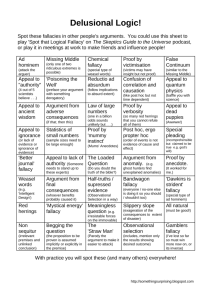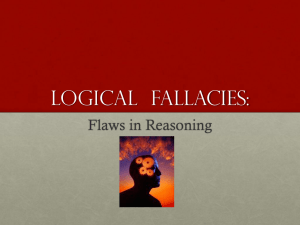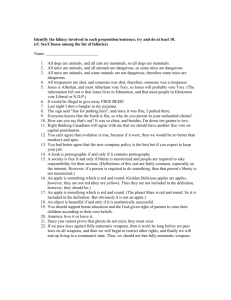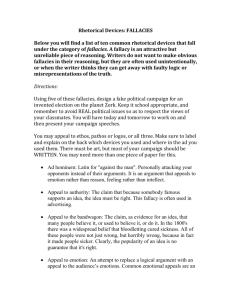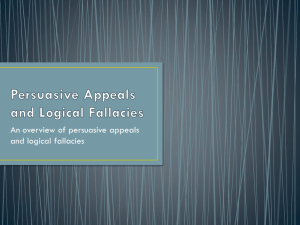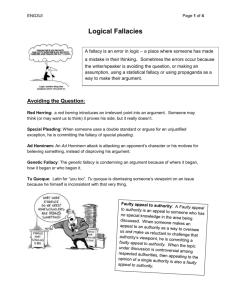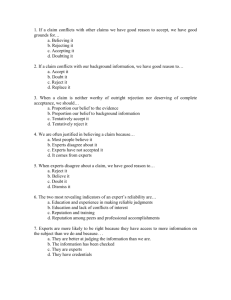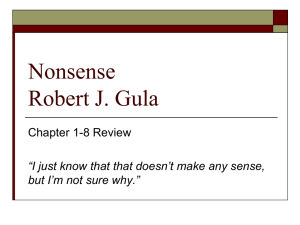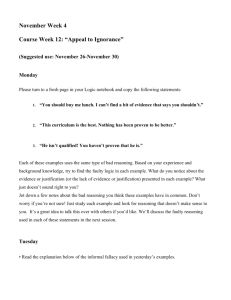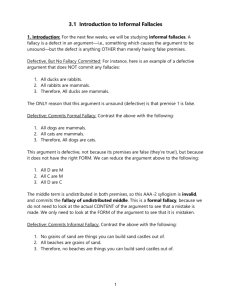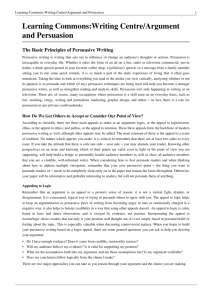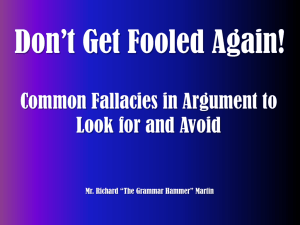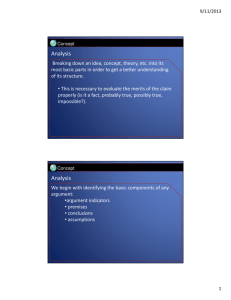Persuasive Appeals and Logical Fallacies
advertisement
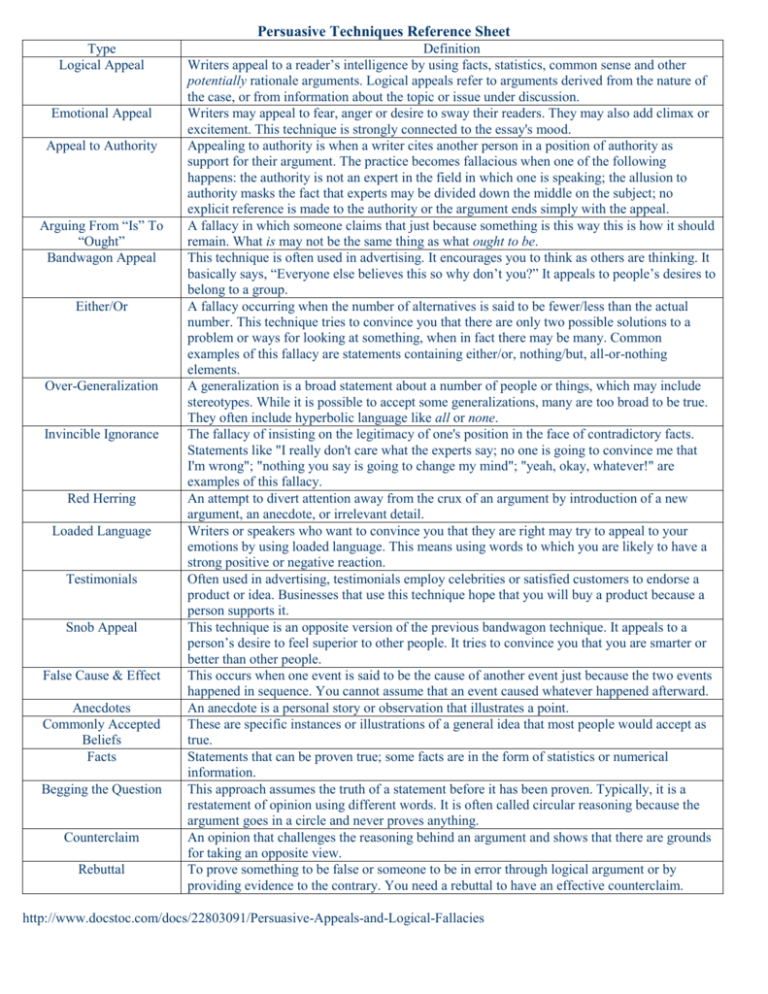
Persuasive Techniques Reference Sheet Type Logical Appeal Emotional Appeal Appeal to Authority Arguing From “Is” To “Ought” Bandwagon Appeal Either/Or Over-Generalization Invincible Ignorance Red Herring Loaded Language Testimonials Snob Appeal False Cause & Effect Anecdotes Commonly Accepted Beliefs Facts Begging the Question Counterclaim Rebuttal Definition Writers appeal to a reader’s intelligence by using facts, statistics, common sense and other potentially rationale arguments. Logical appeals refer to arguments derived from the nature of the case, or from information about the topic or issue under discussion. Writers may appeal to fear, anger or desire to sway their readers. They may also add climax or excitement. This technique is strongly connected to the essay's mood. Appealing to authority is when a writer cites another person in a position of authority as support for their argument. The practice becomes fallacious when one of the following happens: the authority is not an expert in the field in which one is speaking; the allusion to authority masks the fact that experts may be divided down the middle on the subject; no explicit reference is made to the authority or the argument ends simply with the appeal. A fallacy in which someone claims that just because something is this way this is how it should remain. What is may not be the same thing as what ought to be. This technique is often used in advertising. It encourages you to think as others are thinking. It basically says, “Everyone else believes this so why don’t you?” It appeals to people’s desires to belong to a group. A fallacy occurring when the number of alternatives is said to be fewer/less than the actual number. This technique tries to convince you that there are only two possible solutions to a problem or ways for looking at something, when in fact there may be many. Common examples of this fallacy are statements containing either/or, nothing/but, all-or-nothing elements. A generalization is a broad statement about a number of people or things, which may include stereotypes. While it is possible to accept some generalizations, many are too broad to be true. They often include hyperbolic language like all or none. The fallacy of insisting on the legitimacy of one's position in the face of contradictory facts. Statements like "I really don't care what the experts say; no one is going to convince me that I'm wrong"; "nothing you say is going to change my mind"; "yeah, okay, whatever!" are examples of this fallacy. An attempt to divert attention away from the crux of an argument by introduction of a new argument, an anecdote, or irrelevant detail. Writers or speakers who want to convince you that they are right may try to appeal to your emotions by using loaded language. This means using words to which you are likely to have a strong positive or negative reaction. Often used in advertising, testimonials employ celebrities or satisfied customers to endorse a product or idea. Businesses that use this technique hope that you will buy a product because a person supports it. This technique is an opposite version of the previous bandwagon technique. It appeals to a person’s desire to feel superior to other people. It tries to convince you that you are smarter or better than other people. This occurs when one event is said to be the cause of another event just because the two events happened in sequence. You cannot assume that an event caused whatever happened afterward. An anecdote is a personal story or observation that illustrates a point. These are specific instances or illustrations of a general idea that most people would accept as true. Statements that can be proven true; some facts are in the form of statistics or numerical information. This approach assumes the truth of a statement before it has been proven. Typically, it is a restatement of opinion using different words. It is often called circular reasoning because the argument goes in a circle and never proves anything. An opinion that challenges the reasoning behind an argument and shows that there are grounds for taking an opposite view. To prove something to be false or someone to be in error through logical argument or by providing evidence to the contrary. You need a rebuttal to have an effective counterclaim. http://www.docstoc.com/docs/22803091/Persuasive-Appeals-and-Logical-Fallacies
